20. The Executioner (Luis García Berlanga, 1963) – The execution behind the empty hallway
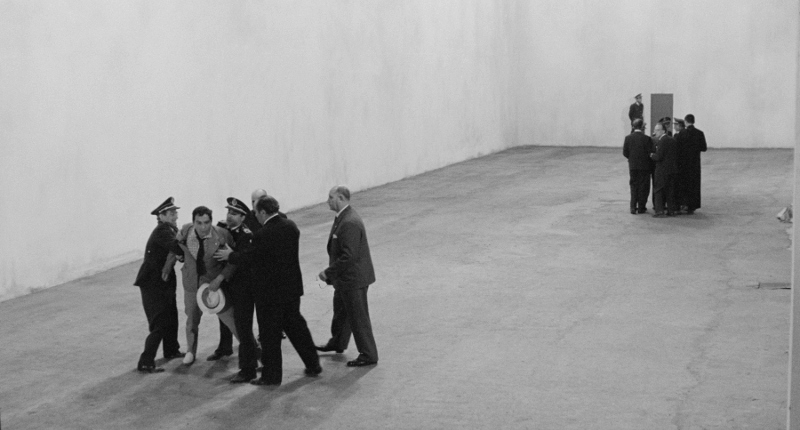
One of the most devastating shots ever found in a comedy film, the execution in Luis García Berlanga’s “The Executioner” is one of the most unsettling moments in Spanish cinema.
The film was conceived during Franco’s dictatorship after Berlanga heard a story where the authorities had to drag the executioner to the gallows, as if he were the one who had been condemned. In the film, the act itself is carried on behind a wall, which mirrors the censorship displayed by Spain’s regime at the time. A blank and sober curtain unsuccessfully trying to look as unremarkable and normal as it can.
19. Stalker (Andrei Tarkovsky, 1979) – The sand room after the meat mincer
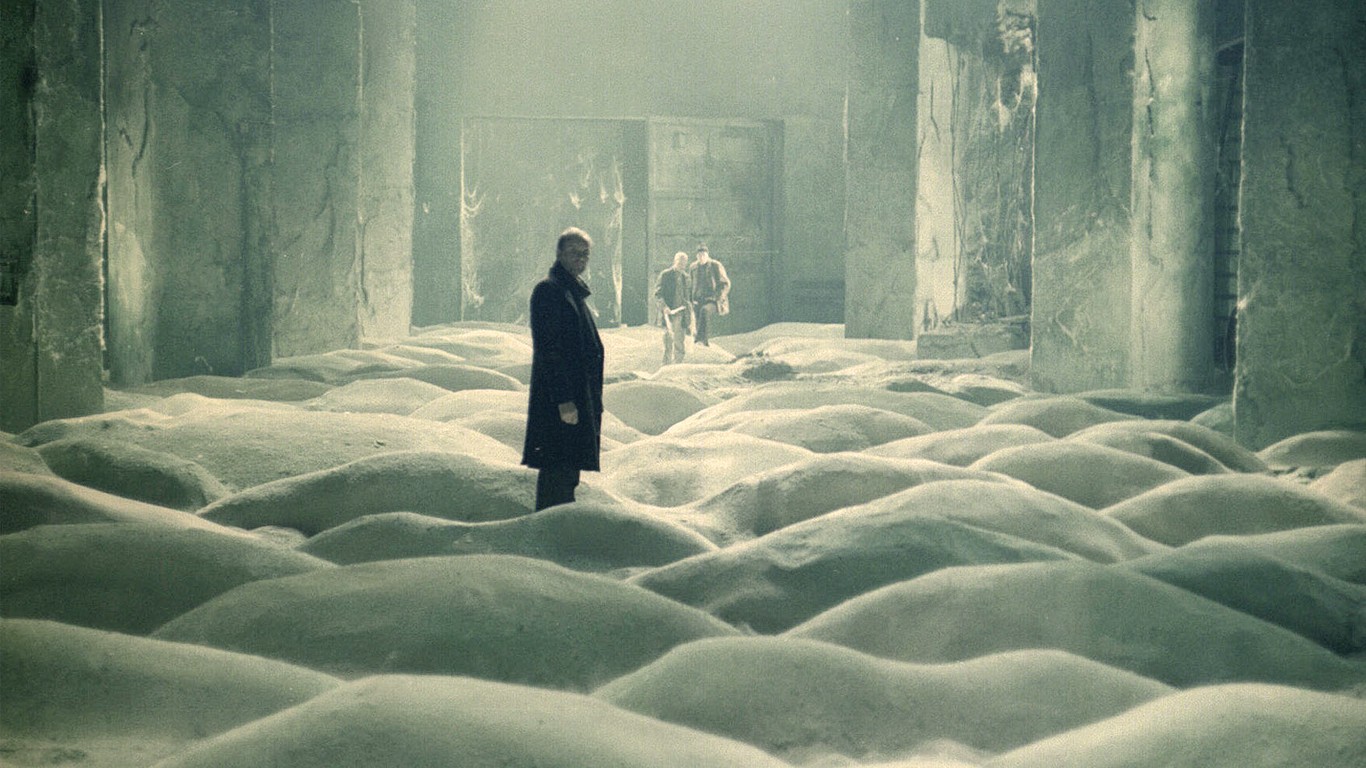
The room decorated with the grave–like sand formations where Writer’s (Anatoly Solonitsyn) monologue takes place in Tarkovsky’s “Stalker” makes for a chilling and ominous moment, as if the characters had suddenly lost themselves inside its walls.
The striking mix natural and artificial elements and their somehow unnatural disposition works with the whole film’s ambiguity when it comes to define the Zone. The whole film has this combination of starkness and oniric ambience that keeps the viewer on the edge for its whole length.
18. The Lord of the Rings: The Fellowship of the Ring (Peter Jackson, 2001) – We see Hobbiton for the first time
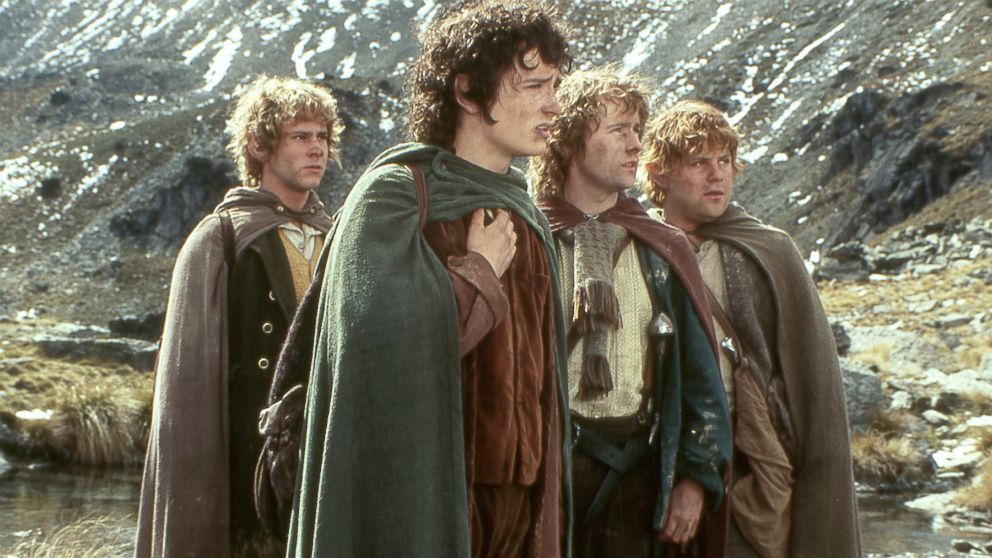
Hobbiton is a cinematic triumph by itself in “The Fellowship of the Ring.” Grant Major and his team began pre–production months before shooting, so the whole set would look like a real place instead of a live–action setting. Peter Jackson knew the importance of the Shire as it would represent the concept of “home” for the whole the Lord of the Rings trilogy. The journey of Frodo and Sam is built around the contrast between their peaceful lives in the beginning, and the inhospitable, harsh, and terrifying places ahead of them.
Gandalf (Ian McKellen) heading toward the big oak that marks Bilbo’s home is just a classic scene that, along Howard Shore’s incredible soundtrack and Andrew Lesnie’s beautiful camera work, created one of the most beloved moments in one of the best fantasy films of all time.
17. Ghost in the Shell (Mamoru Oshii, 1995) – Kids with yellow umbrellas in the city
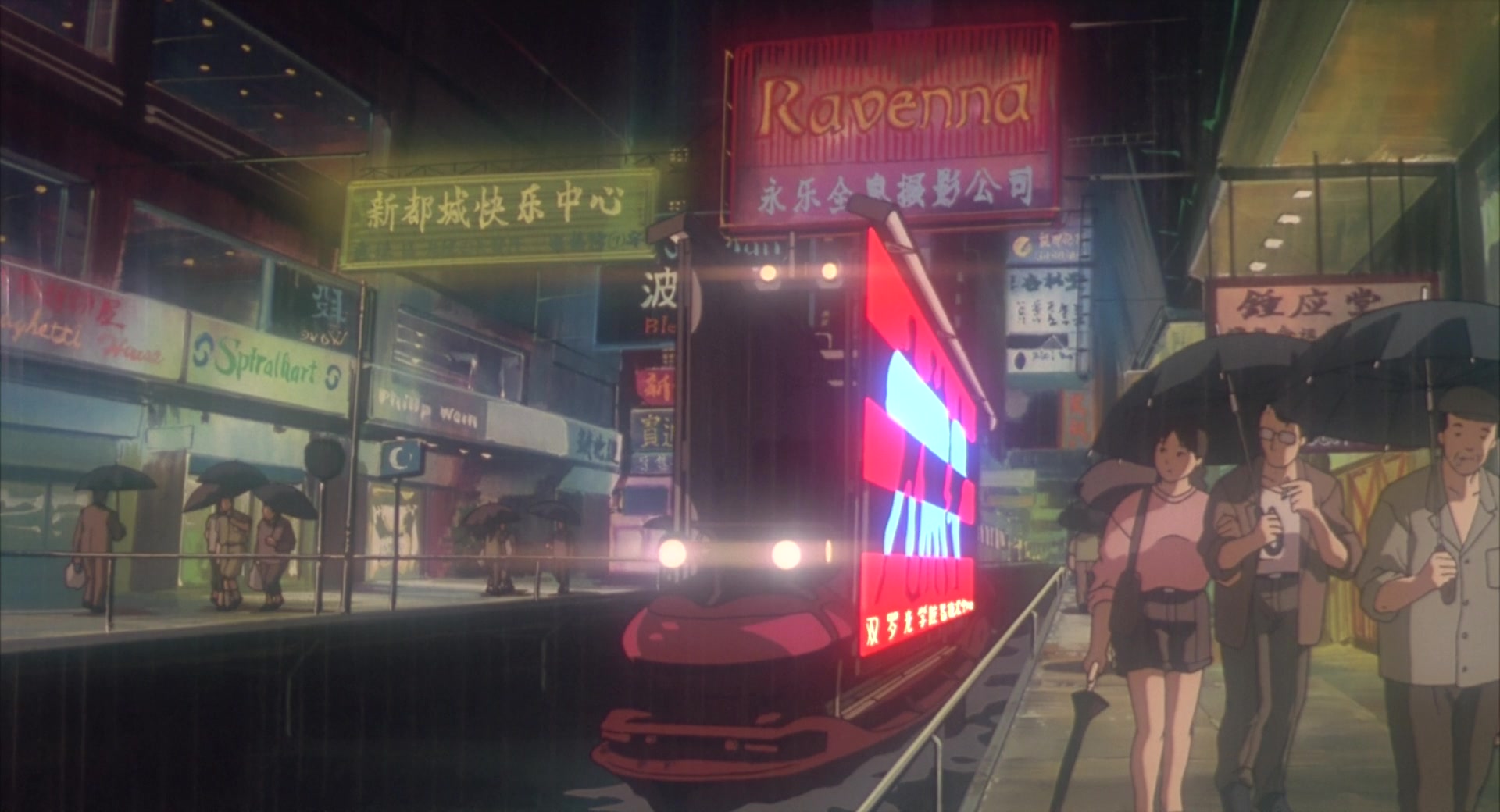
Hiromasa Ogura’s impressive backgrounds for “Ghost in the Shell” are a great example of how art direction can work as well as characters and dialogue when it comes to establish the narrative motifs on the screen.
The theme of the human body, a brittle and aging husk that can be replaced for a more enduring and reliable “shell” thanks to technological advances that can, however, take some of the individual’s humanity, is also mirrored in the buildings of the shot, with the frail, dirty, and irregular houses set in front of the tall, lean office buildings. From a distance, the kids are indistinguishable from one another in the same way that the film’s protagonist Motoko Kusanagi wears her mass–produced synthetic body.
16. Citizen Kane (Orson Welles, 1941) – Xanadu from the gates
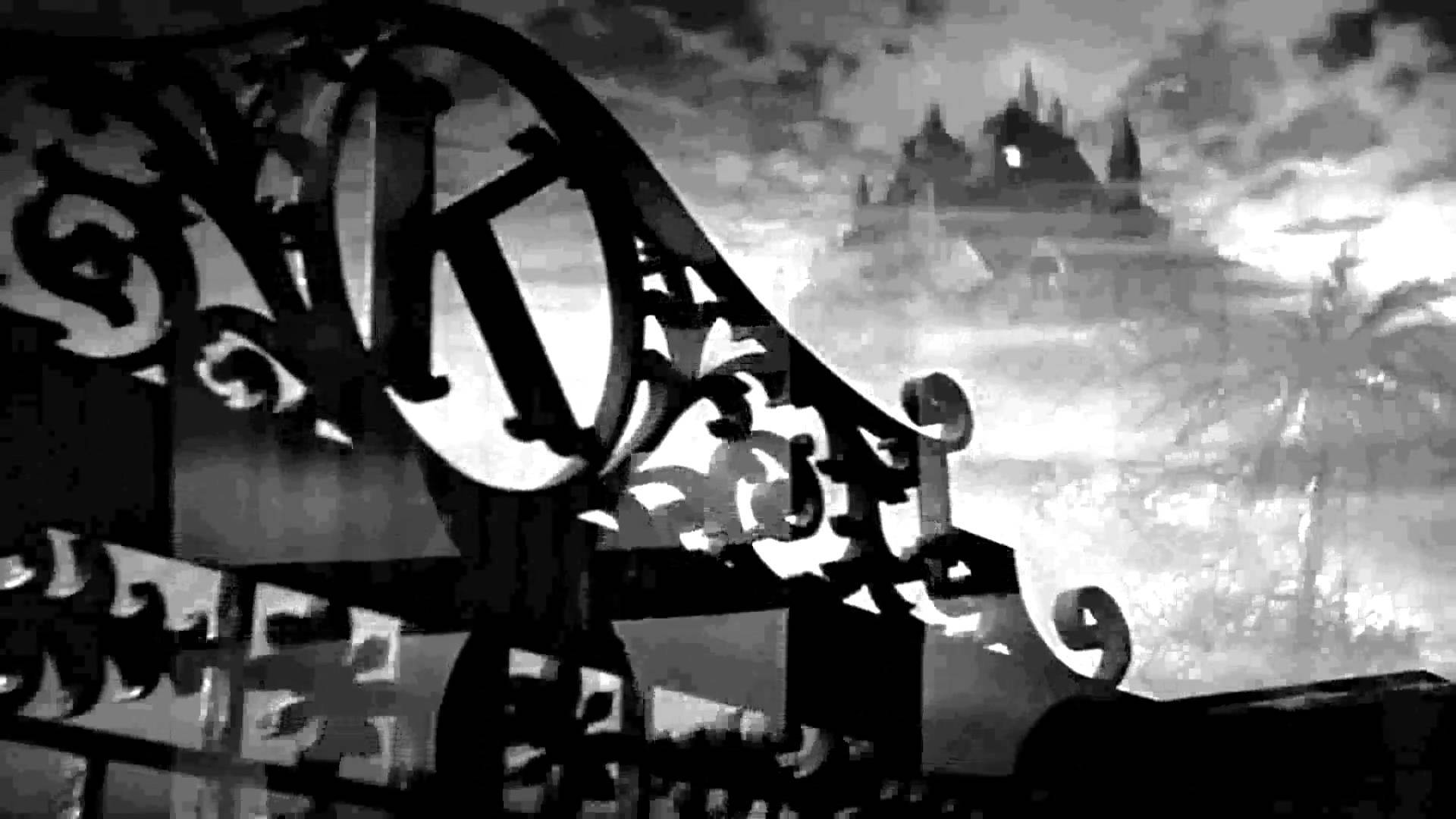
Just like “Ghost in the Shell,” “Citizen Kane” uses its art direction, production design, and cinematography to not only establish the relationship between the elements that shape the universe created inside the film, but also to deepen them as well. However, in “Kane,” those elements are meant to work as a reflection of its main character’s psyche: the magnate Charles Foster Kane (Orson Welles).
The shot of Kane’s Xanadu surrounded by fog in the beginning of the film perfectly encapsulates how Kane’s search for power has shaped his life after all these years: his isolation, detachment, and grief. We see the colossal “K” that seems even bigger than the palace behind it. A luxurious, intimidating but ultimately empty mausoleum that in the end means nothing.
15. Modern Times (Charlie Chaplin, 1936) – Chaplin on top of the wheel
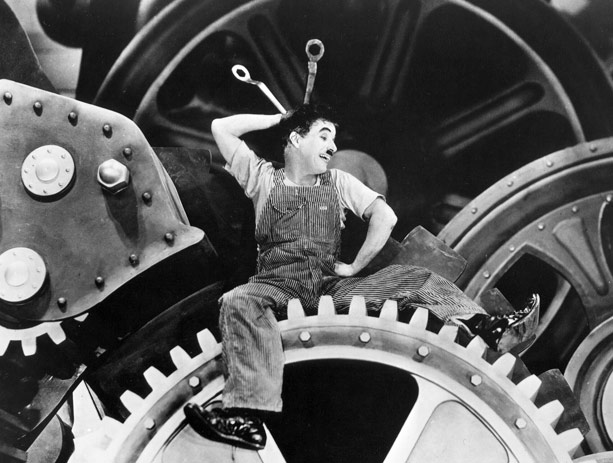
The Tramp (Charlie Chaplin) trapped on top of the cogged wheels has become at the same time one of the most paradigmatic images in comedy, and a harsh portrayal of the 1930’s industrial society that is as resonant today as it was at its time.
Not only has the body of Chaplin’s character been swallowed by the machinery, but it has also swallowed his mind. The ever-rotating wheels mirror the endless labor of the workers, just replaceable pieces of an indifferent but restless chain whose only purpose is efficiency.
14. Alien (Ridley Scott, 1979) – The Nostromo’s crew discover the Space Jockey
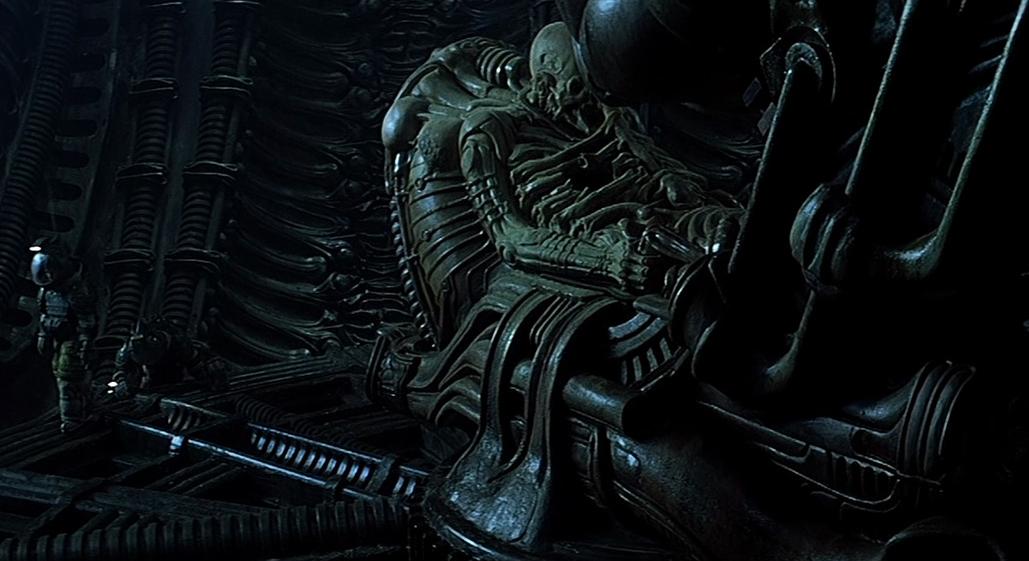
The discovery of the Space Jockey inside the alien ship feels more like getting to the heart of the monster after navigating its veins. The alien, taken from H. R. Giger’s designs, is mesmerizing and revolting at the same time with his exposed eroded exoskeleton that seems to have melted into his own seat.
The scene demonstrates the unsanitary, viscid feeling that permeates throughout the whole film – especially with its heavy undertones of sexual violence – that set it apart from its contemporaries. By comparison, the rooms in the Nostromo are reminiscent of a hospital floor: flat, functional, and antiseptic.
13. Raging Bull (Martin Scorsese, 1980) – Opening credits
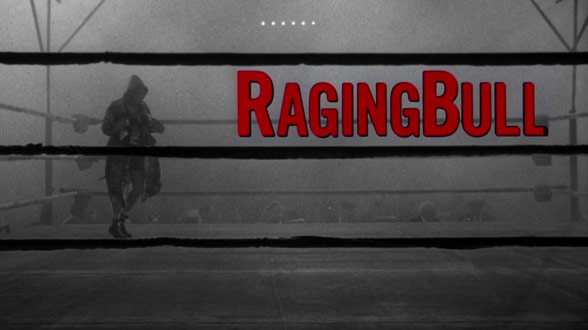
Stating that “Raging Bull” is Martin Scorsese’s finest hour is always debatable, given its director’s impressive body of work, but there’s no doubt that its opening shot with Jake LaMotta (Robert De Niro) warming up along Pietro Mascagni’s Intermezzo is one moment of cinematic bliss.
We’re not only contemplating LaMotta’s casual preparation before a fight, but how his whole life is contained between the ropes that divide the shot horizontally. The shot is even more striking the second time we watch the film, since we know how the violence inside the ring will be mirrored at home.
12. Lost in Translation (Sofia Coppola, 2003) – Taking a little break during karaoke
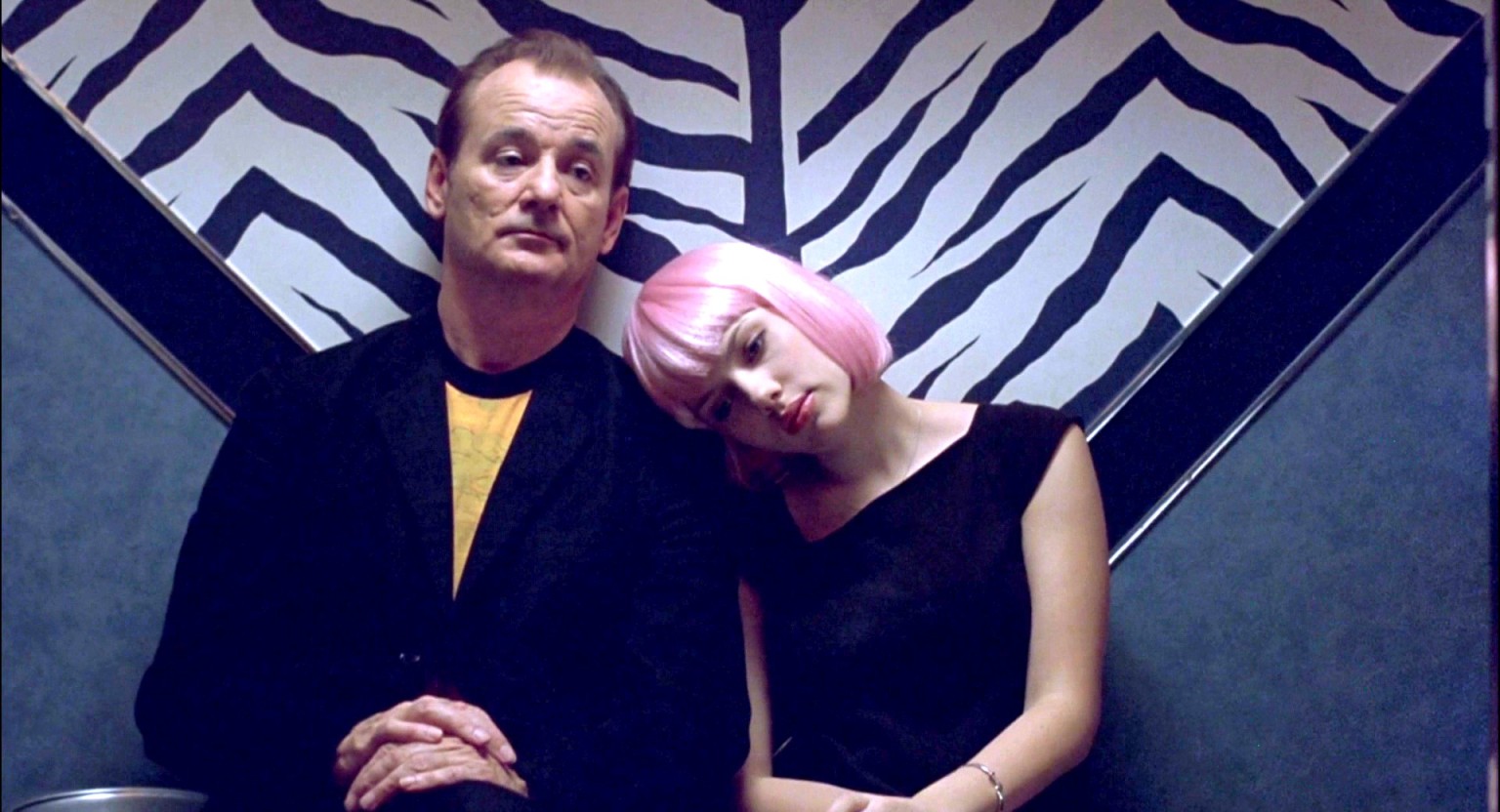
“Lost in Translation” is probably one of the most vibrant, engaging, and inviting portrayals of modern Tokyo in film. Cinematographer Lance Acord opted for using a light camera that allowed him to shoot in a run–and–gun style, giving the whole film a melancholic and throbbing visual flair that makes its images endlessly engaging while still remaining natural and carefree.
The film is able to capture the development of closeness and intimacy simply by watching Bill Murray and Scarlett Johansson take a break after singing some Pretenders and Roxy Music in a narrow corridor from a Japanese karaoke. Every element in the shot is iconic, from the tiger pattern in the background to Johansson wearing her pink wig while resting her head on Murray’s shoulder.
11. The Matrix (Lana & Lilly Wachowski, 1999) – The helicopter explodes behind Trinity
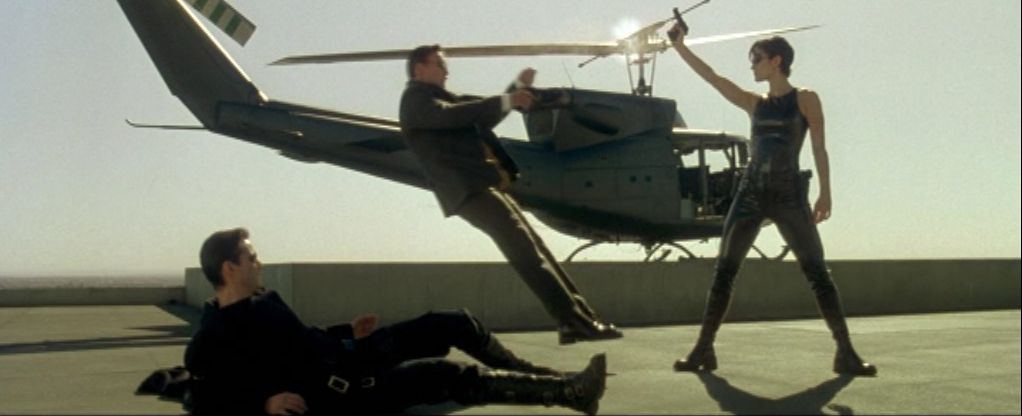
In words of their own directors, the explosion of the helicopter in the 1999 acclaimed cult action/sci-fi film took about three months of preparation in order to figure out how to achieve the ever-expanding circle of fire and glass behind Carrie–Anne Moss’ character.
Since the beginning of Morpheus’ (Laurence Fishburne) rescue mission, the film has been a rollercoaster of escalating action that not only renders the shot visually impressive to behold, but makes it work as the one where the tension accumulated through the whole sequence gets to its zenith and is released immediately afterward. A perfect example of how visually spectacular images should be ingrained in the narrative design.